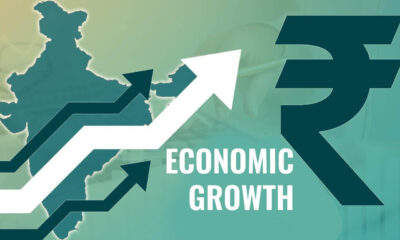India is facing its most significant power shortfall in 14 years for June, attributed to a decline in hydropower generation and delays in commissioning new coal-fired plants. To mitigate potential outages, the government is deferring planned plant maintenance and re-opening idled units.
The Central Electricity Authority (CEA) forecasts a peak shortage of 14 GW in June, particularly during nighttime when solar capacity is offline. This gap, the widest since 2009-10, has prompted urgent measures by the Power Minister, R K Singh, who deferred shutdowns for maintenance and revived 5 GW of idled coal plant capacity.
The Ministry emphasizes that all efforts are being made to maximize generation to meet power demand adequately. Grid-India projects a maximum nighttime demand of 235 GW in June, with approximately 187 GW of thermal capacity and 34 GW from renewable sources available. These figures highlight the challenge of balancing supply and demand amidst growing energy needs.
The power ministry recently invoked emergency measures to ensure gas-based and imported coal-based power plants operate at full capacity. This move underscores the government’s commitment to addressing the immediate power crisis while navigating its long-term energy transition goals.
India’s reliance on coal has been a subject of debate, with efforts to balance energy security with environmental sustainability. Prime Minister Narendra Modi’s administration has prioritized the green energy transition, aiming to achieve net-zero emissions by 2070. However, plans for new coal power plants gained momentum last year, highlighting the complexity of transitioning away from coal dependence.
Existing coal-fired and solar plants are expected to play a crucial role in meeting electricity demand, particularly during daytime hours. While the government is striving to bridge the power deficit, challenges remain in ensuring reliable and sustainable energy supply for India’s growing population and economy.
The current power shortfall underscores the need for strategic planning and investment in diverse energy sources to enhance resilience against future disruptions. As India navigates its energy transition journey, balancing short-term energy needs with long-term sustainability goals will be crucial for ensuring a stable and prosperous energy future.
The power shortfall in India serves as a wake-up call, highlighting the urgent need for diversified energy sources and robust infrastructure to meet growing demand while transitioning towards cleaner energy alternatives. The government’s swift response in deferring maintenance and reviving idle coal plants underscores the importance of agility in managing energy crises.
However, the reliance on coal-fired power generation presents challenges in achieving environmental sustainability and meeting ambitious emission reduction targets. Prime Minister Modi’s administration’s commitment to the green energy transition signals a shift towards cleaner and more sustainable energy solutions, but the pace of implementation remains a concern.
As India grapples with its energy challenges, it must prioritize investments in renewable energy infrastructure, grid modernization, and energy storage technologies to build a resilient and sustainable energy ecosystem. Collaborative efforts between government, industry, and civil society are essential to drive innovation, improve energy efficiency, and accelerate the adoption of renewable energy sources.
By embracing renewable energy technologies and implementing comprehensive energy policies, India can mitigate its dependence on fossil fuels, reduce greenhouse gas emissions, and pave the way for a cleaner, more sustainable energy future.
This transition will not only address the immediate power shortfall but also contribute to India’s long-term economic growth, environmental stewardship, and global leadership in combating climate change.

 Opinion3 years ago
Opinion3 years ago
 Entertainment8 years ago
Entertainment8 years ago
 Entertainment8 years ago
Entertainment8 years ago
 Fashion8 years ago
Fashion8 years ago
 Opinion4 years ago
Opinion4 years ago
 Entertainment8 years ago
Entertainment8 years ago
 Politics8 years ago
Politics8 years ago
 Entertainment8 years ago
Entertainment8 years ago





















